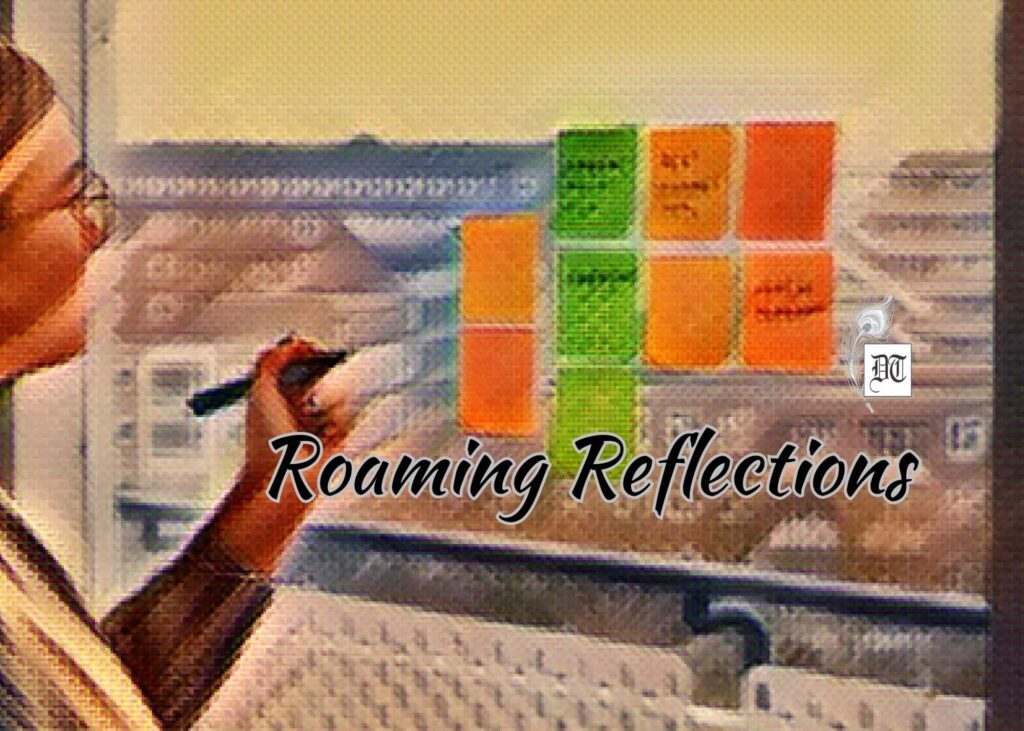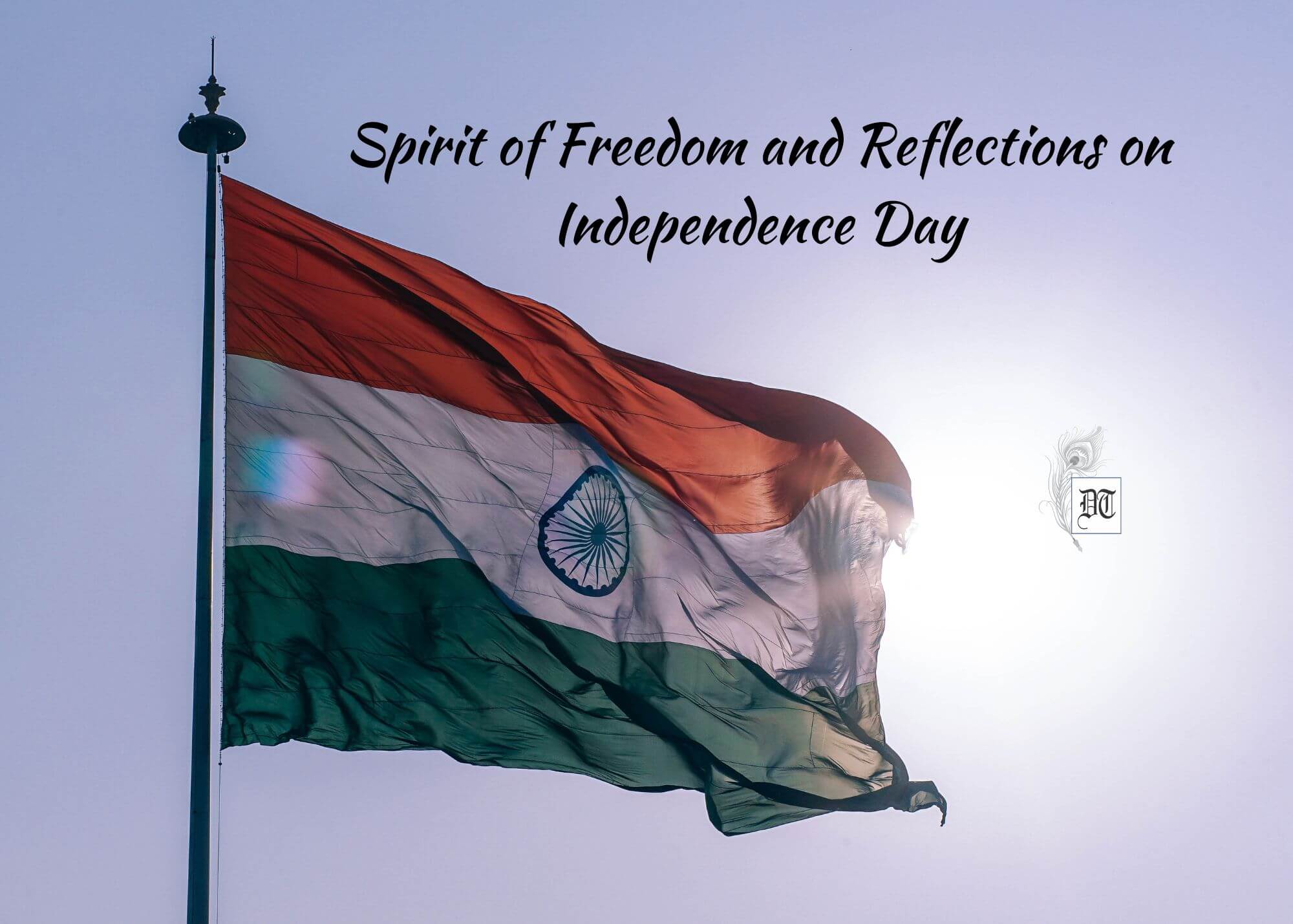Reading Time: 7 minutes
Sreelekha commemorates Independence Day in its 77th year, highlighting leaders like Nehru and Gandhi; kite flying, flag hoisting, unity challenges, social issues, and national pride, exclusively for Different Truths.

Independence Day in India is celebrated on August 15 every year to mark the occasion of gaining freedom from British rule after being colonised for approximately 200 years. We have completed 76 years of freedom and are now in our 77th year of independence. The word “freedom” invokes a myriad of emotions—nationalism being the primary one—in us. We recall with pride the words of our first Prime Minister, Pandit Jawaharlal Nehru, pronouncing the jubilance of attaining independence— “At the stroke of midnight hour, when the world sleeps, India will awake to life and freedom.” It must have been a grand affair when he hoisted the national tricolour for the first time after independence at the Lahori Gate of the Red Fort in Old Delhi.
Ever since then, on every Independence Day, the Prime Minister unfurls the national flag amidst celebrations and grandeur. Similarly, throughout the country, flags are raised at homes, parks, schools, educational institutions, offices, and community areas. A few days before the event, we find hawkers selling tricolour flags at the traffic signals, and markets, and some of them land on top of the dashboards of cars and also, over the bonnets of vehicles.
The day commemorates the courage and sacrifices of our warriors for freedom.
The day commemorates the courage and sacrifices of our warriors for freedom. Our eyes welled with tears when we remembered the relentless efforts of our freedom fighters, visionaries, and national leaders like Mahatma Gandhi, Subhas Chandra Bose, Sardar Vallabhbhai Patel, Baba Ambedkar, and many more, including the lesser-known, unsung heroes who gave away their precious lives to earn the much-awaited freedom after two centuries of rule by the British.
One of the well-known leaders of our times, a renowned scientist (popularly known as the Missile Man) and former President of India, Dr APJ Abdul Kalam, has so aptly mentioned in his following poem, “Soaring Dreams,” how much we adore our country and that we need to value our freedom and be on guard to preserve the unity in diversity of our motherland.
None can with it compete, it's a culture that no one can beat. Whatever caste or religion, all live here in unison. With rivers, sweet fountains, it’s a land of high mountains. Its green forests are pretty and are a source of prosperity. Let’s work hard, for its safety and to be on guard.
Though we say with pride that we understand the excitement and jubilation that the Indians must have felt when the country was liberated from the shackles of domination and colonialism, we—those born many years after independence—do not truly comprehend the same exhilaration of the people during that period when it was newly-earned sovereignty.
I recall one such incident narrated by my relative, who is now 76 years old. When she was about two years old and was travelling with her mother from Delhi to Kolkata (Calcutta at the time) by train, they met some medical students who were also travelling along with them. The moment the students learned that my relative was born on August 15, the same year that India attained independence, their happiness knew no bounds. Driven by unrestrained love and an overwhelming sense of euphoria, the spirited students carried the 2-year-old—treating her like one who had brought valuable freedom along with her birth—from one compartment to another, reciting famous nationalistic poems and singing patriotic songs like “Vande Mataram.”
The meaning of freedom is varied, and to me, it means being free from any kind of burden or suppression, flying high in the sky freely…
The meaning of freedom is varied, and to me, it means being free from any kind of burden or suppression, flying high in the sky freely like birds. Needless to say, the birds are the ones who feel the essence of freedom in the truest sense. Along with flag hoisting and other ceremonies, kite flying is observed as an important festival on Independence Day, a unique way of showing gratitude for the hard-earned freedom of all, irrespective of religion and social status. It’s a delight to gaze at the azure sky dotted with innumerable resplendent kites, where our tricoloured ones appear to be flying gloriously amongst them. Though kites are flown during the festivals of Makar Sankranti in North India and Vishwakarma puja and Akshay Tritiya in West Bengal, the one that is followed as a ritual on Independence Day has a special place in our hearts. People swarming their terraces, along with the colourful fluttering of kites adorning the sky, accompanying the clamour of cheerful voices, is a common scene on each Independence Day across the country.
In the year 1927, when India was protesting against the Simon Commission, the freedom fighters coined and painted the kites with the famous slogan, “Simon, go back.” Ever since then, it has become a customary way of expressing freedom, happiness, and patriotism, and the tradition is still being carried out.
Nowadays, important social awareness messages for the citizens of the country, like “Beti bachao, beti padao,” are found written on the kites, inhabiting the huge canvas of the sky. During the initial years of the pandemic, kites with messages like “Wash your hands,” and “Please maintain social distancing,” were seen on the kites.
Delhi celebrates the festival of independence in different ways…
Delhi celebrates the festival of independence in different ways, and it’s a treat to watch the entire city brighten up in the aura of freedom with a passionate interest in kite flying. Several varieties of kites with several cartoons, superhero characters for children, as well as varicoloured and numerous prints for the younger generation, are available in the markets, out of which the tricoloured ones remain the most popular choice on this day. Though followed to a lesser degree in the newly-formed urban areas of the city of Delhi, the tradition of kite flying remains of utmost importance in the narrow alleys and by-lanes of Old Delhi.
During this time, Chawri Bazaar, a market in Old Delhi, is bustling with people buying a variety of kites. On this day, with film songs playing in the background, mostly patriotic and other hit songs, one hears excited voices saying, “Dheel de,” “Kai po che,” “Bho katta,” as instructions during kite flying and also, when one kite dismisses another from the air during competition between two individuals.
Along with the traditional kites, huge, unusual designer kites—for example, ones resembling our national animal, the tiger, or dragons—appear in the sky in varied colours and shapes, some of which have long tails made up of decorative crepe paper. At times, numerous kites are flown on one single thread, which is a pleasure to watch, adding beauty to the limitless sky and pulsating with life obtained from the enthusiasts flying them till dusk sets in, leaving all with joyful, smiling faces beaming with the zest of freedom. It’s an occasion where one gets to rid oneself of the boring, monotonous affairs of daily life and enjoy a fun-filled day, experiencing the spirit of liberty with youthful exuberance. While indulging in the activity of kite flying, one should ensure that the strings don’t get entangled with the electrical installations and overhead power lines and, hence, should be avoided for safety reasons.
As a kid, I enjoyed kite flying.
As a kid, I enjoyed kite flying. This is mainly because of two boys—my neighbours, approximately my age—who would visit our terrace to fly kites. I accompanied them in almost every instance, as I was entrusted with the responsibility of opening the terrace for them. I learned to fly kites by observing the way they manoeuvred theirs. Though my kites seldom reached much above, mostly hovering over the rooftops of our neighbouring houses, I enjoyed the whole event every time it happened. Once in a while, the generous boys would allow me to hold the string of their kites that soared high up in the sky, probably above the clouds, as they appeared like minute dots to me. It always left me wondering how their kites reached such great heights, unobtrusive and undeterred by the vast expanse of the air, crossing the huge aerial labyrinths with dignity. Holding the string of brief magnificence, my feelings would be awash with a sense of power, liberty, and grandiosity, as the kite would reach the unbound sky, much like the air that moves about freely—light and unencumbered.
On Independence Day, our national flag is displayed at several houses throughout the country, keeping in mind the rules of its distinct placement—with the saffron band at the farther end of the staff that is hung horizontally or at a certain angle from a balcony, window sill, or front gate of a building. The flag of independent India represents our honour, pride, and integrity towards our country.
A few days ago, while passing by one of the houses in my locality, I noticed a discoloured national flag—the vibrant green and saffron known for effusing elegance—hanging from one of the verandahs. It is a matter of shame that some of us treat our national flag with such disrespect. I have noticed that even after several days have passed after the Independence Day event, people leave these flags unattended, under the mercy of the weather—amidst the heat of the sunshine and downpours of the monsoon—to become dishevelled, torn, and turn into insignificant pieces of cloth, which finally find their way to the waste disposal baskets.
Riddled by the meaning of freedom in recent times, I wonder whether some of us are taking it for granted…
Riddled by the meaning of freedom in recent times, I wonder whether some of us are taking it for granted, considering the responsibilities and duties that come along with it like nonsensical eccentricities, treating independence as a momentous occasion of the past, something unworthy of attention and to be discarded like a clutter of rubbish. The true meaning of independence is to ensure the well-being and safety of all, irrespective of regional differences, caste and creed, rich and poor, educated and uneducated, men and women.
My heart hurts seeing the newspapers and news channels filled with stories of violence against innocent people and especially atrocities against women, triggering an incautious entry into the realm of darkness, mounting on an irretrievable path towards destruction. It’s time that we disenthrall ourselves from the burden of meaningless quarrels and baseless, detrimental ideologies, start believing in peaceful coexistence, and live in harmony with our fellow brothers and sisters.
Picture design by Anumita Roy















Very nicely expressed with lucid language. A thoughtful essay on Independence day, very relevant to present day political scenario of our country. In this essay, her expression is reminding us how to live and enjoy being in a democratic, secular, independent country, earned at the cost of the struggle and lives of our freedom fighters. We are responsible to protect our country.
Excellent. A good historical work ,rather than a Story. Keep it up Sreelekha.
Very nice, Tumpa